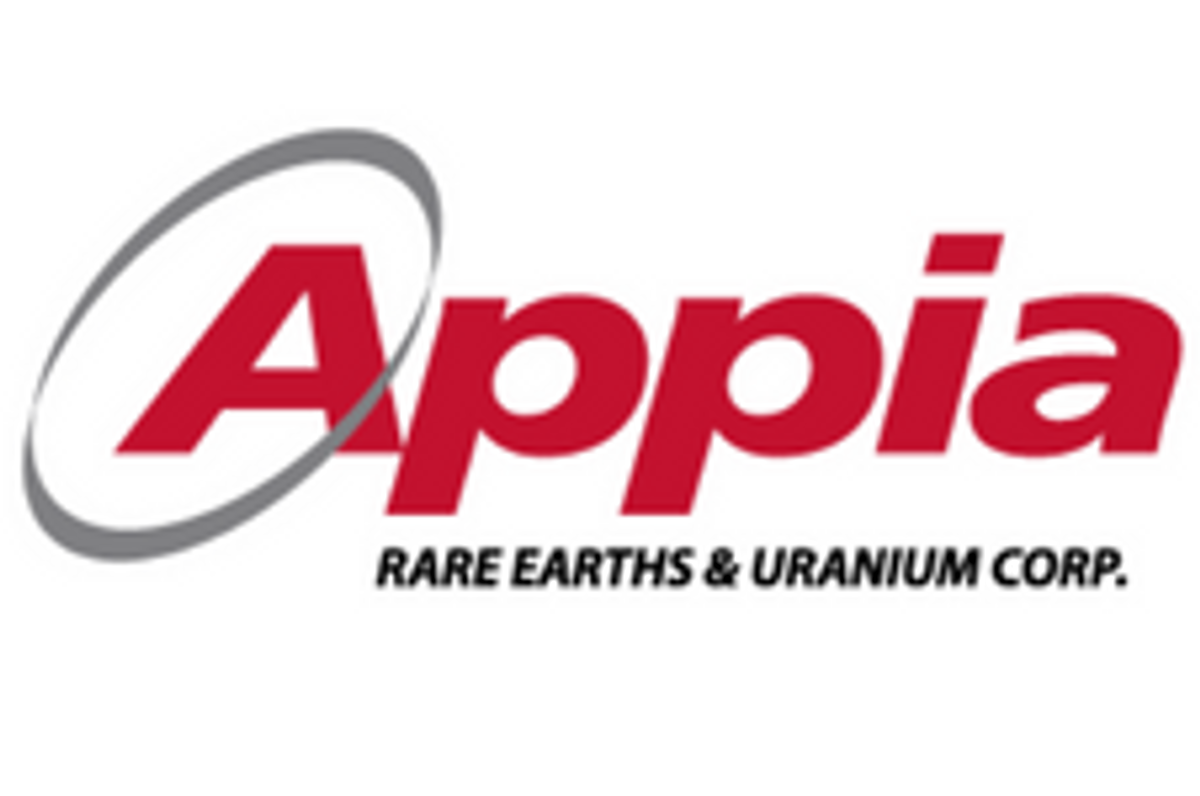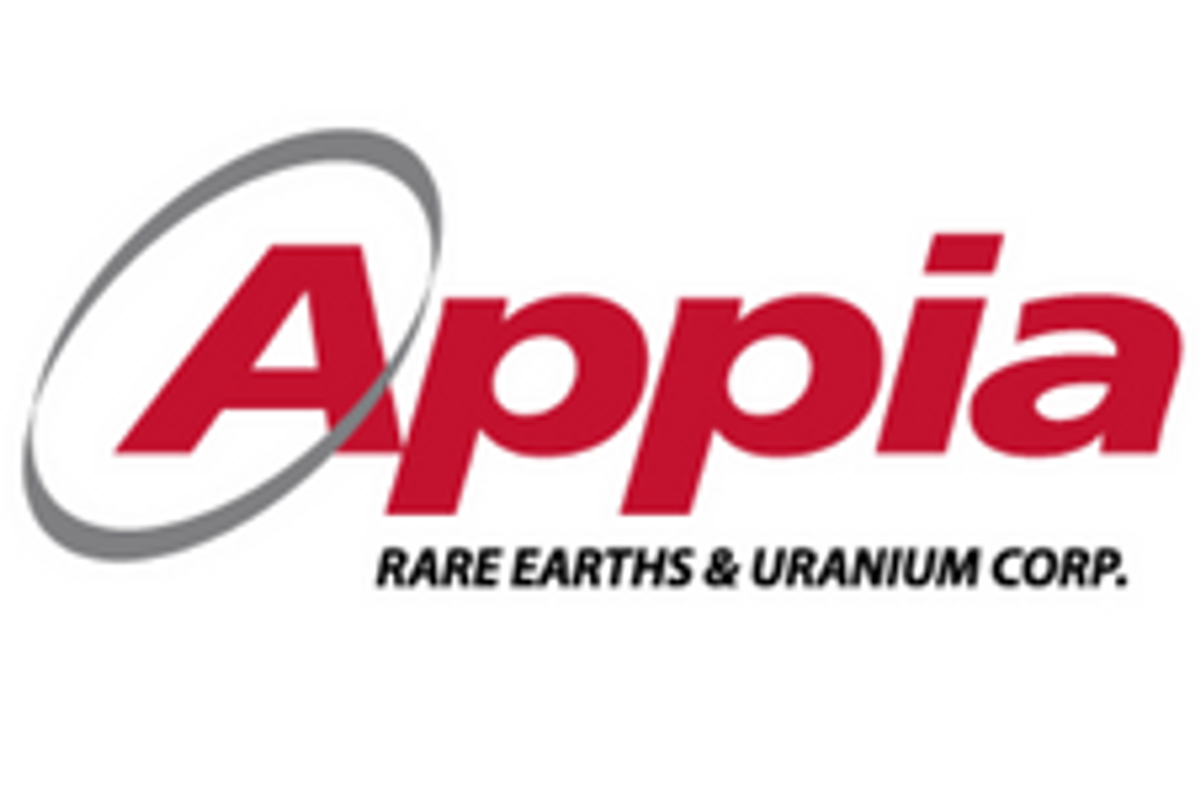
Appia Rare Earths & Uranium Corp. (CSE: API) (OTCQX: APAAF) (FSE: A0I0.F) (FSE: A0I0.MU) (FSE: A0I0.BE) (the "Company" or "Appia") announces the initial mobilization of its field crew at its 100%-owned Alces Lake Rare Earth Elements (REES) Property, Northern Saskatchewan.
"The 2023 work season will be highly focussed on determining high priority drill targets along the mineralized structural corridor leading SSE from the Magnet Ridge for upwards of +20 kms," stated Stephen Burega, President of Appia. "Targets will be chosen based on their radiometric signature, and followed-up by extensive ground-truthing with spectrometers and a handheld XRF unit to ensure our drill campaign tracks the continuity of mineralization controlled by this important structural corridor. It is hoped that new surface zones will contain high-grade REE mineralization as well as near surface bulk tonnage variable-grade mineralization will be discovered with the potential to increase total volume/tonnage on the property."
Based on our 2022 drilling results and new geophysical interpretation of the data, the Company will embark on a 5-phase program comprising an aggressive prospecting & sampling program, followed up by selective drilling of priority targets, and airborne gravity-magnetics-radiometrics at 100 m line spacing of 2 the identified high priority areas on the property (the eastern structural corridor and Alces Lake North).
Mobilization of the field crew will take place over the next 2 weeks.
VP Exploration Irvine R. Annesley is pleased that these airborne radiometrics/magnetics/3D gravity gradiometer surveys will be undertaken to fully delineate, characterize, and interpret this distinct structural corridor. He expects that "Our increasing understanding of the complex lithological and structural context of the Alces Lake REE minerals system, adjacent to/within the main structural corridor, will ultimately enhance our potential for the discovery of additional mineralized zones at depth along this mylonitic shear zone."
"The Alces Lake Property contains variable grade REE mineralization; including high-grade with some of the highest-grade total REE mineralization in the world and hosted within a number of surface and near surface occurrences that remain open at depth and along strike," stated VP Exploration Irvine Annesley. "The United States and Canadian governments are actively pursuing critical REE resources to build a domestic REE supply chain within North America, and hope to see the Alces Lake project as part of the answer to this demand."
Planned 2023 Exploration Program
The Exploration Program is scheduled to start in early June and is planned to include the following 5 phases:
Phase I
- Helicopter-supported detailed regional ground prospecting, mapping, and sampling of the structural corridor area
- Helicopter-supported detailed regional ground prospecting, mapping and sampling over historic REE occurrences of the Alces Lake North area
Phase II
- 5,000 m of helicopter-supported diamond drilling of 1) priority targets following the strike extension south-southeast from the Wilson, Richard, Charles, Bell, Ivan, Dylan, Dante, and AMP zones through the Magnet Ridge Zone for ~20 kms, 2) the southern extension of The Magnet Ridge Zone (delineation drilling), and 3) reconnaissance drilling on priority regional geological/geophysical targets in the Western Anomaly area;
Phase III
- Airborne gravity-magnetics-radiometrics (AGG) geophysical survey of the structural corridor (Figure 1) at 100 m line spacing o map the REE minerals system of the structural corridor area from surface to depth in order to prioritize drill targets;
Phase IV
- Airborne gravity-magnetics-radiometrics (AGG) geophysical survey of Alces Lake North at 100 m line spacing to map the REE minerals system of Alces Lake North from surface to depth in order to prioritize drill targets;
Phase V
- Mineralogical/petrological characterization (IRAP study) of the major REE zones/subzones at WRCB-Ivan-Dylan-Dante and Magnet Ridge to understand/interpret the enigmatic complex minerals system at Alces Lake. Note: PhD research indicates that the mineralization is protracted and pulsed over ~90 Ma (~90 million years of sustained anatectic melting to produce the low- to high-grade REE mineralization at Alces Lake).
Exploration permits for the proposed Phases I and II are approved, and those of Phases III and IV will be submitted shortly.
Background on Alces Lake
In 2022, the Company completed an aggressive 17,500 m diamond drilling campaign of 1) the WRCB extension at depth and southwards, 2) new targets at Magnet Ridge and Magnet Ridge West, and 3) some regional Western Anomaly targets. Targets were identified primarily through the interpretation of The Company's 2021 Airborne Radiometric (U, Th, K) survey in conjunction with its 2021 and 2022 prospecting results.
Ongoing work at Alces Lake is following up on a distinct structural corridor (mylonitic shear zone), identified in 2019 from magnetic/gravity worms and from legacy GSC mapping data, that forms the eastern limb of a major fold structure that hosts the low- to high-grade mineralized vein system (known as the WRCB-Ivan-Dylan-Dante Zones). The mineralized zones (vein system) on surface average 15 to 50 m in width and are composed of individual veins, pods, and boudins which range from one to 10's of metres in thickness. Veins, pods, and boudins are discontinuous and heterogeneous in composition to ~250 m depth and follow a linear to anastomosing (branching) structural geometry. This REE mineral system extends SSE along strike for at least 4 - 5 kilometres to Magnet Ridge. The limits of this mineralized system have not been established along strike or along dip, and therefore its extension remains unknown. However, the associated structural corridor that borders (and includes) the mineralization system is identified readily on Lidar and Google Earth images (macroscale) and can be followed for at least 25 km (Figure 1).
Comprehensive interpretation and modeling of the WRCB and Magnet Ridge mineralized zones have indicated that follow-up geophysical and geochemical surveys are necessary along and across the highest-priority areas of a major structural corridor (2.5 - 4.0 km-wide mylonitic shear zone) that extends south-southeast from the main mineralized zones at WRCB-Ivan-Dylan-Dante to Magnet Ridge and then for another 20 to 25 km (Figure 1).
The origin and implications of this heterogeneous mylonitic shear zone (e.g. an old suture zone stitched by multiple orogenies of Paleoproterozoic age) remain unknown at this time. The proposed high-resolution airborne geophysical surveys will facilitate delineation and mapping of REE mineralized (monazite-bearing) pegmatites and associated biotite schists (glimmerites) adjacent to and within this structural corridor to establish new drill targets. The petrophysical characteristics (i.e. density, radiometric, and magnetic properties) of monazite and associated REE minerals will be maximized as a vectoring tool(s) for finding new targets (i.e. by utilizing the leading edge geophysical exploration technology at optimal line spacing/orientation).
Figure 1. Location of Alces Lake NNW-SSE-trending structural corridor (mylonitic shear zone): a) Lidar and b) Google Earth (Poliakovska et al., 2019).
To view an enhanced version of this graphic, please visit:
https://images.newsfilecorp.com/files/5416/167869_appia1en.jpg
About the Alces Lake Project
The Alces Lake project encompasses some of the highest-grade total and critical* REEs and gallium mineralization in the world, hosted within several surface and near-surface monazite occurrences that remain open at depth and along strike.
* Critical rare earth elements are defined here as those that are in short-supply and high-demand for use in permanent magnets that enable modern electronic applications such as electric vehicles and wind turbines. The "magnet metals" rare earths are neodymium (Nd), praseodymium (Pr), dysprosium (Dy) and terbium (Tb).
The Alces Lake project area is 38,522.43 contiguous hectares (95,191.00 acres) in size and is 100% owned by Appia.
The technical content in this news release was reviewed and approved by Dr. Irvine R. Annesley, P.Geo, Vice President Exploration, and a Qualified Person as defined by National Instrument 43-101.
About Appia Rare Earths & Uranium Corp
Appia is a publicly traded Canadian company in the rare earth element and uranium sectors. The Company is currently focusing on delineating high-grade critical rare earth elements and gallium on the Alces Lake property, as well as exploring for high-grade uranium in the prolific Athabasca Basin on its Otherside, Loranger, North Wollaston, and Eastside properties. The Company holds the surface rights to exploration for 113,837.15 hectares (281,297.72 acres) in Saskatchewan. The Company also has a 100% interest in 12,545 hectares (31,000 acres), with rare earth element and uranium deposits over five mineralized zones in the Elliot Lake Camp, Ontario.
Appia has 130.5 million common shares outstanding, 143.5 million shares fully diluted.
Cautionary Note Regarding Forward-Looking Statements: This News Release contains forward-looking statements which are typically preceded by, followed by or including the words "believes", "expects", "anticipates", "estimates", "intends", "plans" or similar expressions. Forward-looking statements are not a guarantee of future performance as they involve risks, uncertainties and assumptions. We do not intend and do not assume any obligation to update these forward- looking statements and shareholders are cautioned not to put undue reliance on such statements.
Neither the Canadian Securities Exchange nor its Market Regulator (as that term is defined in the policies of the CSE) accepts responsibility for the adequacy or accuracy of this release.
For further information, please contact:
Tom Drivas, CEO and Director: (cell) 416-876-3957, (fax) 416-218-9772 or (email) tdrivas@appiareu.com
Stephen Burega, President: (cellular) 647-515-3734 or (email) sburega@appiareu.com
Irvine R. Annesley, Ph.D., P.Geo., Vice-President Exploration: (tel.) (416) 546-2707 or (email) jnrirvine@appiareu.com

To view the source version of this press release, please visit https://www.newsfilecorp.com/release/167869

